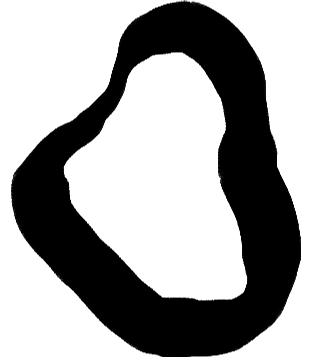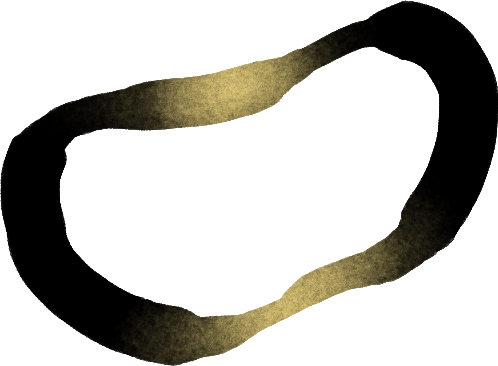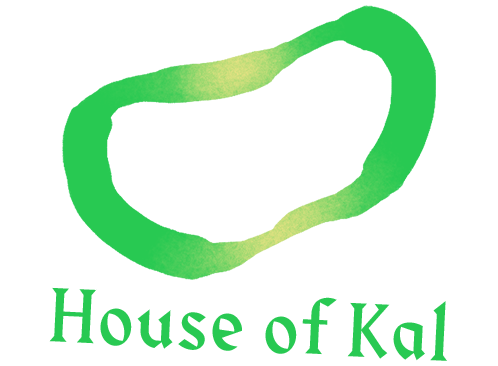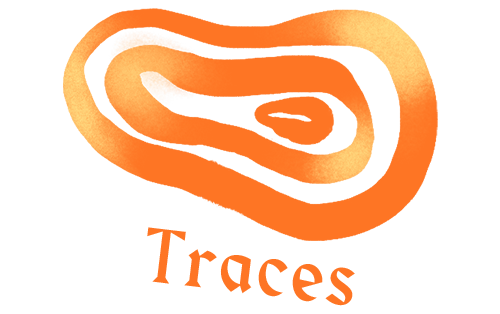Knotweed Frequencies #2: radio kal live broadcasts from knowbotiq’s Darkish Matter Radio Studio
30 November, 14:17 h CET (moon rise in Jeetze) online at radio kal

A Frei with Sakina Aliakbar, Suza Husse, Veenadara Lakshika Jayakody, Hema Shironi Joseph, Sophia-Layla Afsar, Alishba Memon, Ayesha Tariq, Basil Andrews, Betül Merve Tekoglu, Rheremita Cera, Sumugan Sivanesan, Seba Ali and Special Guest Izidora L LETHE
Connecting participants in and beyond Karachi, Colombo and Berlin, A Frei’s radio kal TOOLING#3: Relational Listening Composing Workshop in early August 2021 was an experiment with relationality beyond linear notions of time, attunement toward difference and simultaneity of place and shared sonic fields.
«From where do i listen? How do i listen? To what do i attend? What do i hear? Are necessary to thinking about environments and ecosystems. These questions show us that we are always working across difference. Which is in itself always in becoming an unknown. The simplicity in such questions belie a profound and critical recognition and responsibility essential to any movement toward abolishing a world built on white supremacist violence and dispossession.»
– AM Kanngieser, Environmental Listening: Being with/in Place, 2021.
«Collaboration as an insisting practice on a continuous circulation of power between listening and sounding.»
– Pauline Oliveros
«(…) If it is a past thought for example reverse it so that you now see it as in front of you. If it is a future memory reverse it so that you now see it as behind you. Now, take one of the future thoughts you have reversed and build up a memory out of it. (…)»
– Black Quantum Futurism, Time Travel Experiment Number 2.
«When do you stop hearing the sound? When does memory begin? (…) How we listen depends on our consciousness. Are we creating the sound that we hear by listening or is sound creating our listening? Is it co-creation between consciousnesses? Is the sound disappearing or am I disappearing?»
– Pauline Oliveros, Quantum Listening: From Practice to Theory (to Practice Practice)».
The 3-day «Relational Listening Composing Workshop» focused on collaborative practices of listening-composing and situated, embodied and queer modes of listening and sounding. The workshop led by A Frei aimed to experiment with relationality beyond linear notions of time, attunement toward difference and simultaneity of place and shared sonic fields as a proposition for conviviality beyond language. Accompanied by Pauline Oliveros’ thoughts on Quantum Listening, Black Quantum Futurism’s Time Travel Experiments and AM Kanngieser’s thoughts on Environmental Listening, the group was attuning with the support of different listening exercises and meditations and practiced relational DIY real time composing online and simultaneous phone recordings. Part and heart of the workshop were joint relational listening compositions spanning over the course of three days. Each day focussed on specific/interconnected modes of listening and sounding and utilized these as scores for composing together.
Relational Listening Composition Day 1 – Listening Place/Place as score
Relational Listening Composition Day 2 – Peri-acoustic Bowls/Relationality as score
Relational Listening Composition Day 3 – Singing tension/Placing tension (with Special Guest Izidora L LETHE)
Two of the three recordings are now published here as part of the radio kal series.
For the recording of the compositions, we used the open-source software «Soundtrap», which was introduced in the radio kal Tooling #2 Workshop earlier this year.
Relational Listening Compositions Score:
Relational Listening Composition Day 1:
Listening Place/Place as score
- Open a new project in an open-source audio sharing/recording app* and share it with the group on your phone. Add a track for your recording and name it. Check if all the participants are visible in the project.
- Place your computer and phone close to a window. Make yourself comfortable.
- Use an online video conferencing software on your computer with your headphones on, in order to hear the rest of the group.
- Use your window as an instrument. Play it with your hands, your fingers, your nails, your arms. Look outside of the window. Play the rhythms and the movements of your environment. Start to invent your own parameters on how to play what you sense and see. (eg. raise the volume of your play when something/someone moves towards you, lower it again when it/they move/s away from you …)
- The group decides when to start recording.
- Press «record» in the audion sharing app on your phone at the same time as everyone else in the group.
- Start playing, while listening to the other participants and be aware of leaving enough space in your playing for the upcoming compositions on the following two days. Leave space for all participants and the future soundings.
- The group decides when to stop.
- Save and export all the tracks via a browser on your computer.
- Import all the layers to an audio software, equalize the single layers, so that every track is «equally» audible, pan the tracks if you like.
- Export the composition as a stereomix.
- Listen to the composition with the group.
Relational Listening Composition Day 2:
Peri-acoustic Bowls/Relationality as score:
- Fill up a big (ceramic) bowl with water. Add a small (ceramic) bowl into the bigger bowl. Get one or two sticks with a soft end. Place the bowls on a soft towel.
- Open a new project in an open-source audio sharing/recording app* and share it with the group on your phone. Add a track for your recording and name it. Check if all the participants are visible in the project.
- Use an online video conferencing software on your computer with your headphones on, in order to hear the rest of the group.
- Start playing the bowls with the soft sticks, while listening to the play of the other participants.
- The group decides when to start the recording.
- Press «record» simultaneously with the group in the open-source audio sharing/recording app* on your phone.
- Try to focus on the group’s play, try to attune your playing according to the dynamic of the group.
- Start playing, while listening to the other participants and being aware of the composition you did yesterday and the day to come. Leave enough space in your play for the other participants, the past composition and the future composition.
- The group decides when to stop.
- Safe and export all the tracks via a browser on your computer.
- Import all the layers to an audio software, equalize the single layers, so that every track is equally audible, pan the tracks if you like.
- Export the composition as a stereomix.
- Layer the mix with the composition of the day before.
- Export the 2-day composition as a stereomix.
- Listen to the compositions with the group.
Relational Listening Composition Day 3:
Singing Tension/Placing Tension:
- Open a new project in an open-source audio sharing/recording app* and share it with the group on your phone. Add a track for your recording and name it. Check if all the participants are visible in the project.
Singing into Tension:
- Focus on your breath for a while.
- Try to slowly scan your body for tensions.
- Locate a specific tension, focus on it, breathe into that tension for a while.
- Press «record» simultaneously with the group in the open-source audio sharing/recording app* on your phone. You won’t wear headphones – so you won’t be hearing the others, but will imagine them.
- Breathe in. While breathing out, sound, sing or speak into one specific tension in your body. Sound, sing or speak into the tension as long as your breath can hold it. Breathe in, repeat. Adjust the volume and intensity of your voice according to the location and intensity of the tension in your body.
- Continue scanning your body and sounding into each tension that you can locate.
Placing Tension:
- Feel into where, what or whom each tension might be related to.
- Breathe in. While breathing out, sound, sing or speak towards the place to which the tension is related to. Adjust the volume and intensity of your voice according to the distance and intensity the tension needs to be placed in and where it belongs.
- While sounding, be aware of the simultaneity of the group, yesterday’s composition and the composition of the day before yesterday. Leave enough space in your singing for the other participants and keep in mind the past compositions.
- Stop when you feel that you have placed your tensions.
- Save and export all the tracks via a browser on your computer.
- Import all the layers to an audio software, equalize the single layers, so that every track is equally audible, pan the tracks if you like.
- Export the composition as a stereomix.
- Layer the stereomix with the two compositions from the days before.
- Export the 3-day composition as a stereomix.
- Listen to the compositions with the group.
* use for example the open-source app «soundtrap»
A Frei is a non-binary sound artist, relational listener, sonic community organizer, collaborator, sonic researcher, record store co-operator, graphic designer, experimental dj and mushroom enthusiast based in Zürich, Switzerland. They organize concerts, experimental audio formats and collaborate on listening performances and collective listening settings. A works as freelance graphic designer focussing on sound related projects, small editions and art books and give weekly risograph workshops.
A’s (sonic) practice consist of listening workshops, research-based listening performances, essayistic djing, semi-modular synthesis, various forms of microphony and free electroacoustic improvisation. They are deeply engaged in questions concerning the «ethics of listening» – in socio-political, environmental, embodied and queer practices of listening within its situated contexts, emancipatory possibilities within the sonic realm and forms of non-verbal communication/improvisation.
A Frei is co-founder of OOR Records/OOR Saloon (one’s own room) in Zürich. OOR Records is a collective, cooperative and honorary operated record and art-book store, organic archive and social gathering place for engaged ears. (www.oor-rec.ch)
OOR Saloon is a soundart space and production-context focussing on emancipatory collaborative and queer-feminist politics/practices of listening and sound, electronic and electroacoustic music, experimental club culture, performance and sound art. The OOR Saloon series wishes to create collaborative, multi-sensory and discursive spaces for negotiations of emancipatory artistic practices related to sound/modes of listening and questions of difference/relationality. In the context of OOR Saloon A Frei is responsible for event-conception/programming, organization (together with Franziska Koch) as well as the graphic design. (www.oor-rec.ch/archive)












